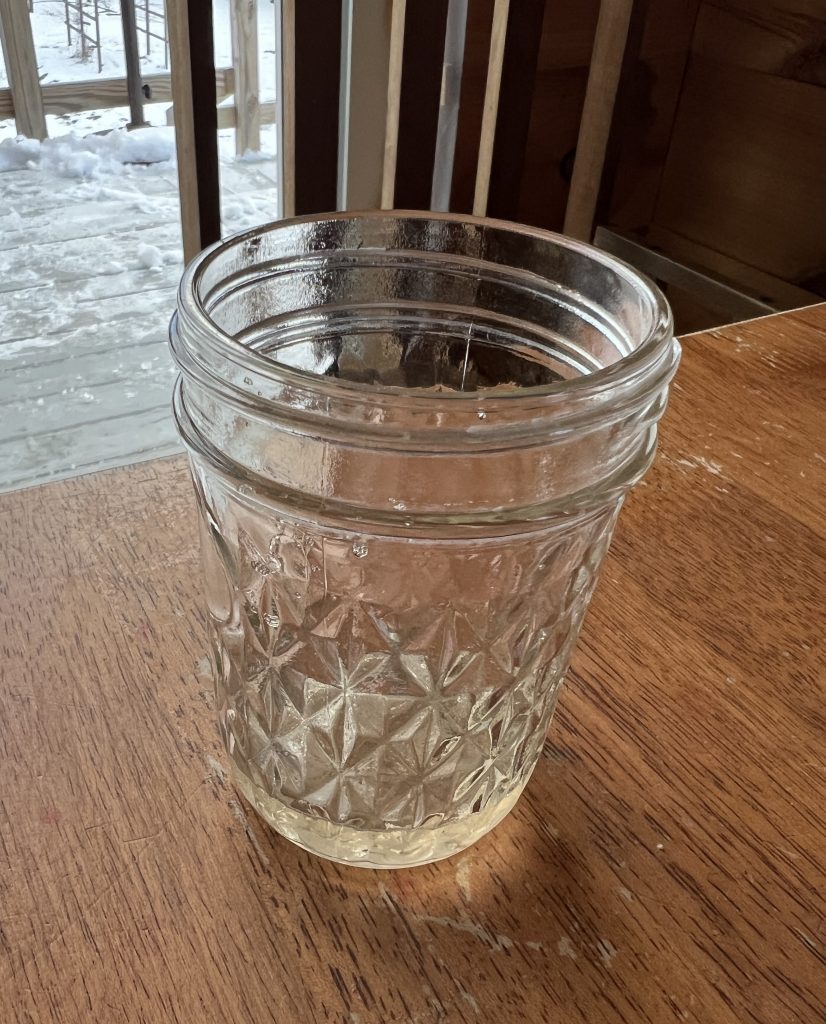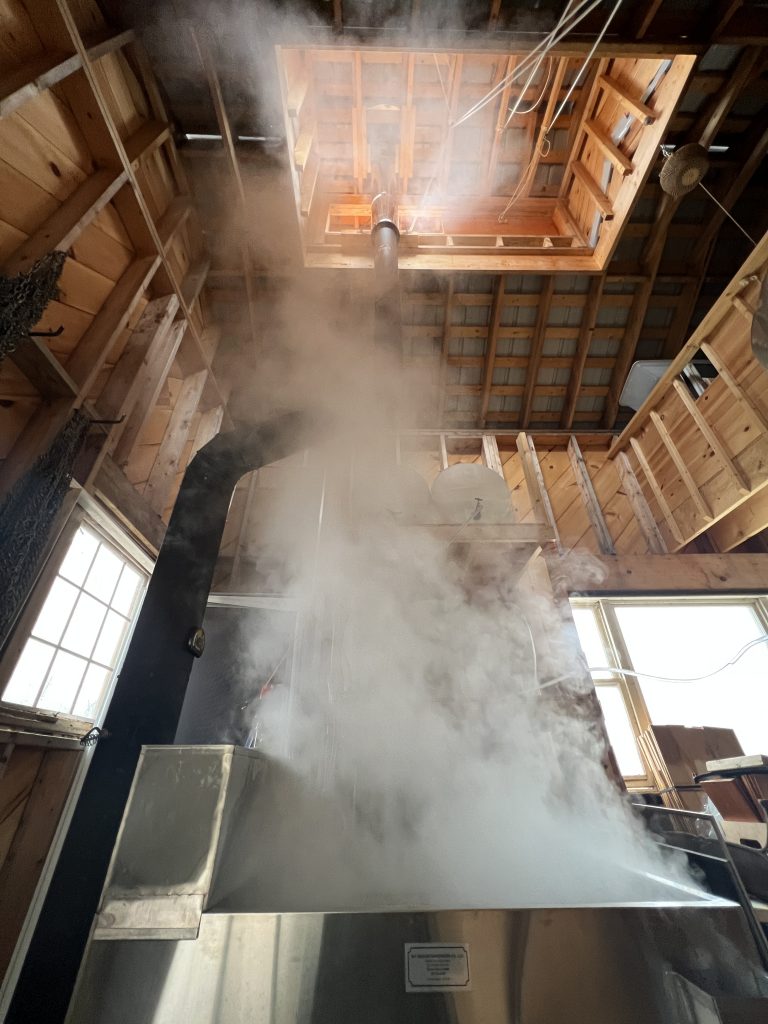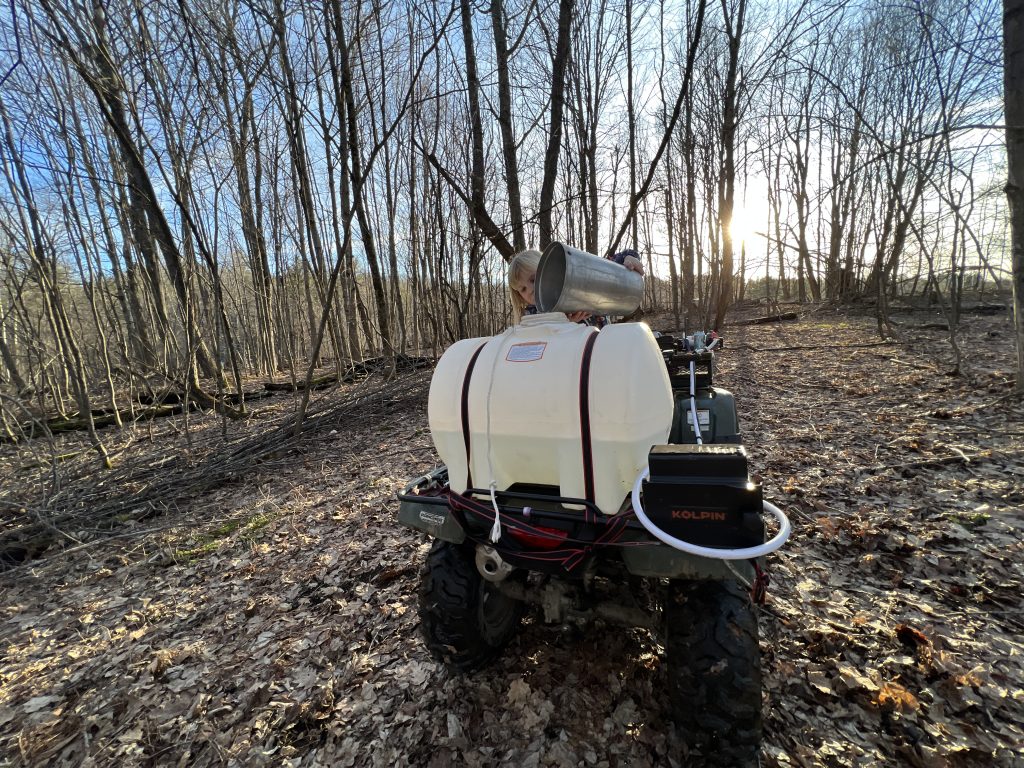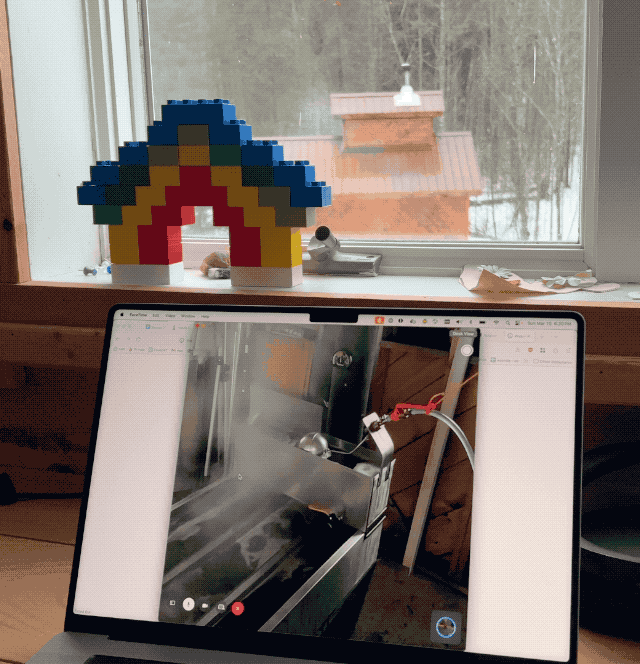Here I was, patting myself on the back for all the experience acquired over 7 sugaring seasons. This 8th one though, I’ve made several costly mistakes. A filtering snafu, sap overflow, woodpiles allowed to get wet, and more importantly, I misread the weather and let the pan full of syrup spoil. I thought it had been cold enough but it hadn’t and I let it sit too long. I could smell it right away when I started boiling. It didn’t smell bad but it was lacking the sweetness and you could tell something was off.
So that’s it, an anticlimactic end to a very decent season otherwise. It’s not worth rebuilding up the pan with the sap about to turn. And it’s ok really, we still made enough, and I’m actually enthused to get going again next year with a list of many things I want to improve, which I’ll implement until then.
Still though it’s a bit of a shame to waste all this effort. If nothing else, it’s good exercise out in the woods, and it’ll make a nutrient dense addition to a pile of compost. It’s always good to remind myself that I used to go to a gym and exert myself into the void. Moving 200 gallons of sap from the forest to a compost pile achieved something at least, on top of being a good workout.
We received a monster snow storm that made bucket harvesting a snowshoe ordeal. Esther loved creating little paths between the buckets.







